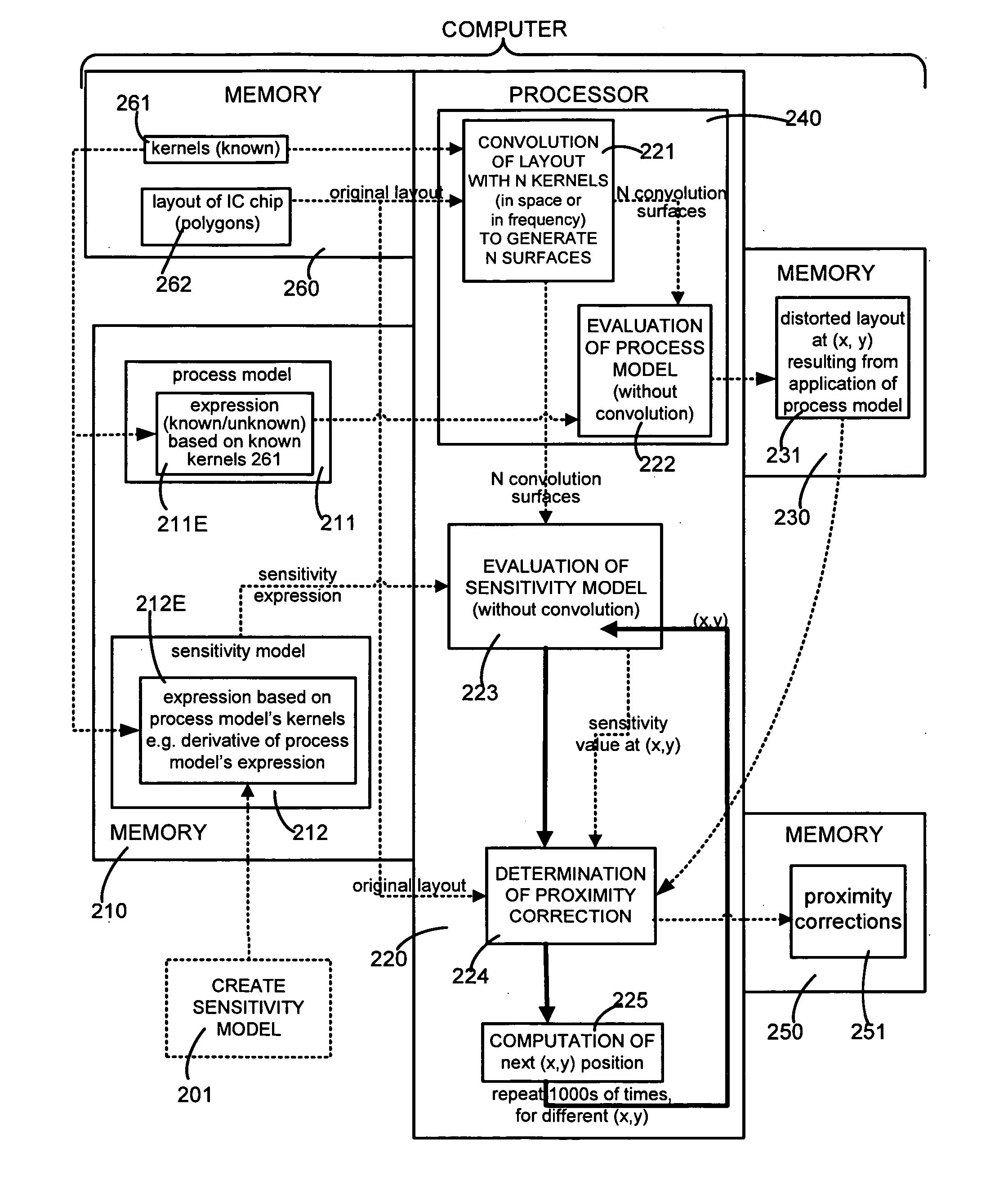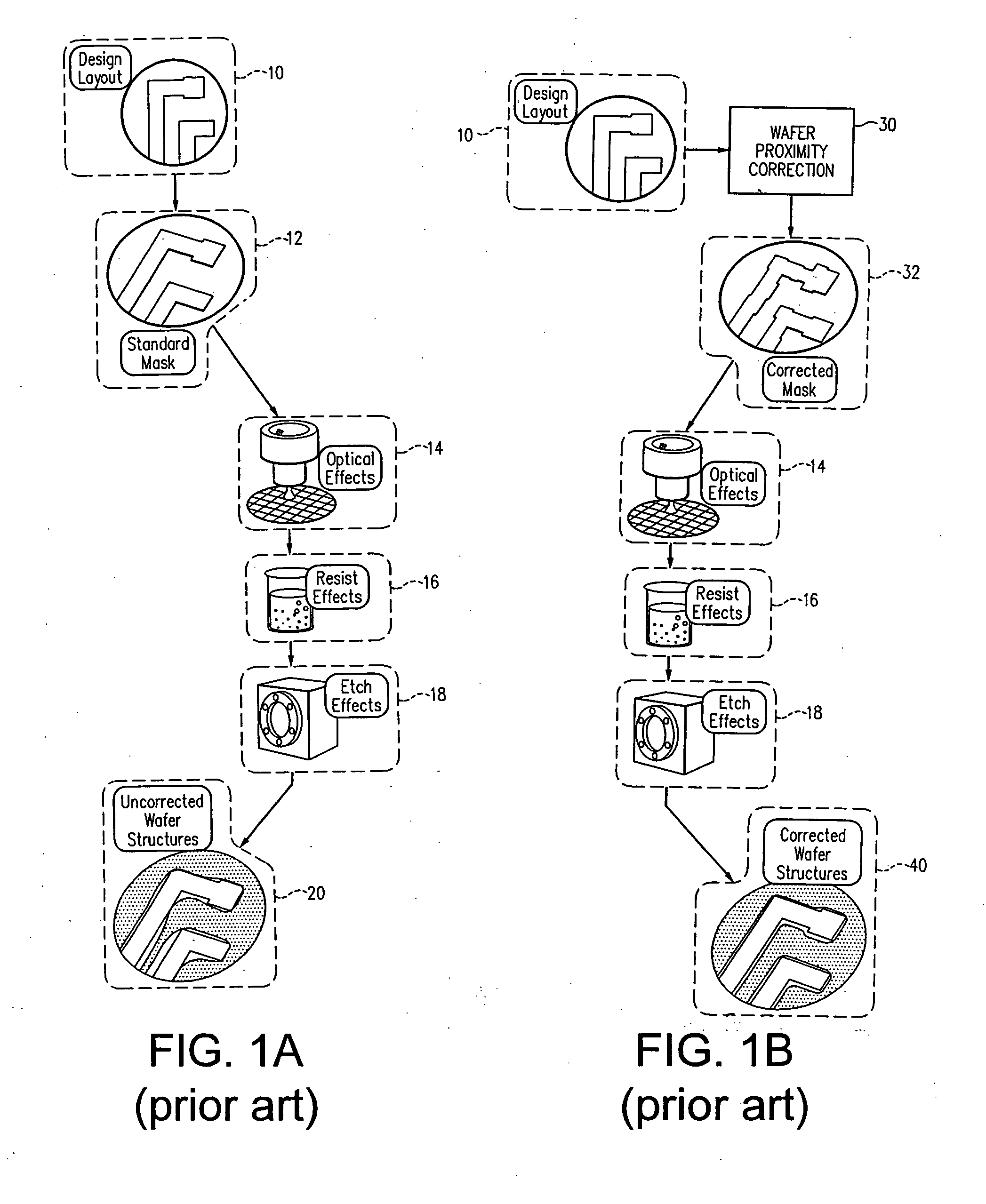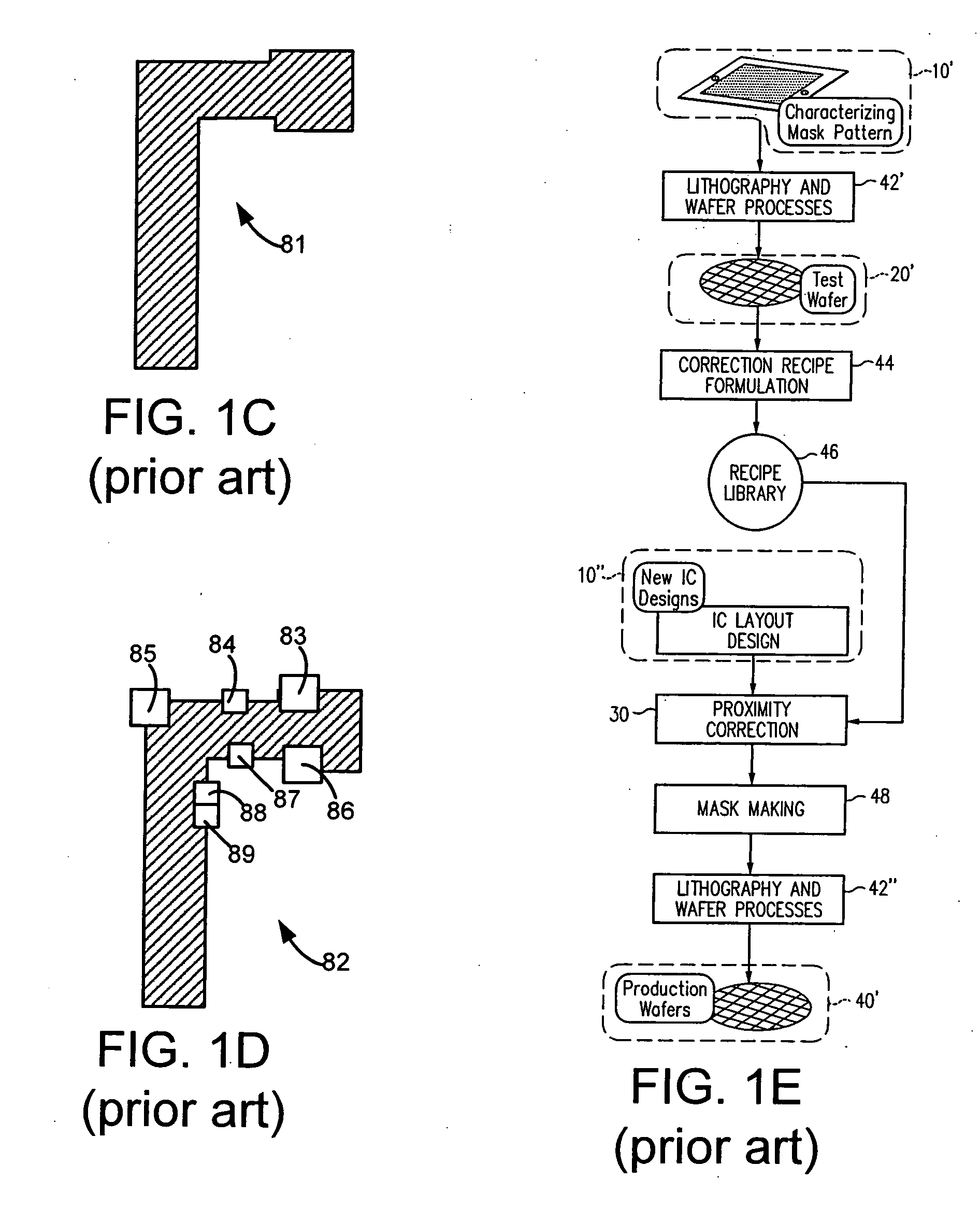Model of sensitivity of a simulated layout to a change in original layout, and use of model in proximity correction
a layout and proximity correction technology, applied in the field of layout design, can solve the problems of cumbersome calculation of the effect of perturbation on each serif, prohibitively expensive second application of process model at each serif, and inability to use fft approach in any commercially available software for full chip, etc., to achieve the effect of reducing memory requirements and facilitating computation
- Summary
- Abstract
- Description
- Claims
- Application Information
AI Technical Summary
Benefits of technology
Problems solved by technology
Method used
Image
Examples
Embodiment Construction
[0090] A memory 210 (FIG. 2) of a computer is encoded, in accordance with the invention, with a model 212 of sensitivity of a layout generated by simulation of fabrication of a wafer (hereinafter “distorted layout”), with respect to a change in an original layout of an integrated circuit (IC) chip that is input to the simulation. The change in original layout may be in any form, such as a serif of unit area or a movement of a polygon edge in the layout by a unit distance. During simulation, the computer evaluates another model, namely a model 211 of a wafer fabrication process (hereinafter “process model”) to generate the distorted layout. A sensitivity model 212 can be created from the process model 211 in any manner, either manually or automatically, and creation of model 212 (as per operation 201 in FIG. 2) in certain illustrative embodiments is described below.
[0091] Distorted layout 231 generated by use of process model 211 includes optical effects 14, resist effects 16, and e...
PUM
 Login to View More
Login to View More Abstract
Description
Claims
Application Information
 Login to View More
Login to View More - R&D
- Intellectual Property
- Life Sciences
- Materials
- Tech Scout
- Unparalleled Data Quality
- Higher Quality Content
- 60% Fewer Hallucinations
Browse by: Latest US Patents, China's latest patents, Technical Efficacy Thesaurus, Application Domain, Technology Topic, Popular Technical Reports.
© 2025 PatSnap. All rights reserved.Legal|Privacy policy|Modern Slavery Act Transparency Statement|Sitemap|About US| Contact US: help@patsnap.com



